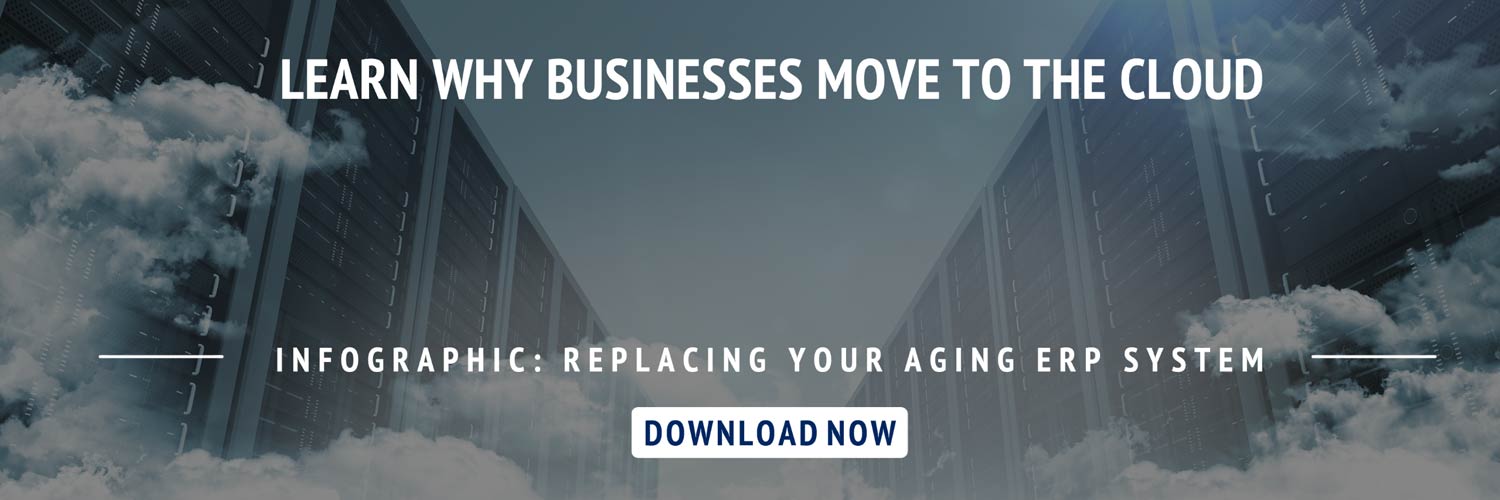How to Plan an Oracle ERP Cloud Migration and When to Know It's Time
A majority of organizations using enterprise resource planning (ERP) software are in the process of or planning a migration to a cloud-based solution. In fact, it’s predicted that “the global Cloud ERP market to grow from $64.7 billion in 2022 to $130.0 billion by 2027.” With the growing need for features like off-site accessibility for remote teams and cost reduction, Oracle ERP Cloud is emerging as a top technology to keep businesses connected and up to date. But what should you know about an Oracle ERP Cloud migration?
What is an Oracle ERP Cloud migration?
A simple definition of an Oracle ERP Cloud migration is the transfer of business data and processes from an on-premise solution to Oracle ERP Cloud. Many of the implementation recommendations apply, including:
- Use a methodology
- Test often
- Integrate early
- Maintain communication
Signs of an Aging On-Premise ERP System
On-premise ERP solutions require periodic upgrade projects to maintain support, add functionality and improve security measures. However, there may be several situations in which upgrading your current solution is no longer a viable path for you. Signs of an aging on-premise ERP are:
- Data accuracy doubt: If you’re processing business data within your on-premise solution, you may not be confident it’s up to date or accurate. This could be for a number of reasons, including an outdated release, poor integration or you’re running a legacy system.
- Maintenance challenges: Chances are your business has changed since your current ERP was implemented. It may still do the job, but maintenance costs paid to the vendor might be too high to justify its continued use.
- Costly or lack of support: Is support from the vendor affordable to sustain? Or does the vendor offer support for your ERP system or release anymore? If you answered no to either of these questions, your on-premise solution may need replacing.
- Upgrade is too expensive: One of the first things to consider when planning an ERP project is budget. But when evaluating a possible upgrade, is the required cost similar to that of a full implementation? An upgrade may not be the most cost-effective solution.
Why Migrate to the Cloud
While many businesses are satisfied for now with their on-premise solution, migrating to ERP Cloud brings a number of added benefits. Why should you consider an Oracle ERP Cloud migration?
- Access anywhere: As a cloud-based solution, Oracle ERP Cloud allows you to view data and operate your solution entirely on the cloud. This means you can access your system from anywhere, as long as you have an internet connection, opening the door for mobile capabilities and remote working.
- No equipment: Since the internet is all you need to use Oracle ERP Cloud, on-site equipment such as servers or databases are no longer necessary.
- Data security: Data stored on the cloud with an Oracle ERP Cloud system is protected with multiple layers of security that comes integrated with your solution. New security patches and measures are released quarterly.
- System agility: ERP provides one source of truth for all your business data. However, Oracle ERP Cloud leaves businesses room to grow, while the latest technology is used to power tools that can provide deep insight into your operations and increase collaboration.
- Always up to date: As business data changes, your information is always up to date across all access points and in real time. Use dashboards to consume these changes as they occur at a high level, or drill down using infolets and infotiles.
Cloud ERP is Growing
As of 2019, 69 percent of enterprises were moving business-critical applications to the cloud. However, that number continues to grow. Many businesses are looking to the cloud for full-service solutions, rather than running a hybrid of on-premise and cloud operations. Some more examples that cloud ERP is growing are:
- Market size is increasing: The cloud-based ERP market is projected to grow to $37.7 billion by 2024 – an increase from $29 billion in 2019.
- CFOs are in for cloud ERP: More than 73 percent of CFOs trust cloud ERP for financial data, such as Oracle Financials Cloud, due to their security, uptime, remote access, governance and risk management tools and revenue recognition standards.
- Partial cloud operation: Seventy-three percent of companies have at least one application in the cloud, and another 17 percent plan to do so this year.
- Less expensive: On average, the total cost of ownership for cloud ERP is 30 percent less than an on-premise solution. This is a result of many factors, including lack of necessary equipment, elimination of costly upgrade projects and a general reduction in costs as a result of automation and added efficiency.
- New technology: Most cloud ERP solutions have tools powered by the latest technology, such as the Internet of Things (IoT), artificial intelligence (AI) and machine learning. Fifty-eight percent of developers have either already integrated or plan to integrate AI into ERP technology.
Steps to a Successful Oracle ERP Cloud Migration
Many recommendations for a successful migration are similar to that of an implementation. An ERP Cloud migration isn’t so different from an implementation in that data is organized and converted before being uploaded to the new solution. However, a process assessment can establish what isn’t working and what changes should be made. Steps you should take to ensure a successful ERP Cloud migration include:
- Start planning: Any good plan starts with brainstorming. Decide what you require from your solution, what can be optimized, identify your project team and understand the new business benefits you’ll recognize. Additionally, this is when you should begin getting employees on board and plan how you’ll manage that change.
- Choose a partner: While not required, there are numerous benefits to working with a consulting firm. Partners like Terillium not only help you to pinpoint where improvements can be made but also make recommendations based on your business goals.
- Develop a roadmap: Like taking a map (or Google Maps) on a roadtrip, developing a roadmap for your ERP Cloud migration is necessary to ending up where you want to go. This will identify milestones, navigate the process and more.
- Follow an implementation methodology: Using an implementation methodology lays out a step-by-step plan for your project. While some of the details may diverge, a proven methodology will aid with change management, process navigation and project guidance.
Our ERP Cloud Migration Services
As an Oracle ERP Cloud partner, Terillium offers a variety of services, including assessments, health checks, implementations, managed services and special projects. We use the Oracle Unified Method for implementations and migrations to ensure a comprehensive project.
The five steps of the Oracle Unified Method are:
- Plan
- Design
- Validate
- Deploy
- Support
Terillium also offers Ascend, a program for migrating Oracle JD Edwards to Oracle ERP Cloud. Specifically designed to move from JDE to ERP Cloud, the program provides a specific framework for businesses to:
- Understand the key components of a cloud migration
- Take inventory of active JD Edwards customizations
- Conduct a gap analysis and build a future roadmap
- Accelerate the migration from JDE to ERP Cloud





